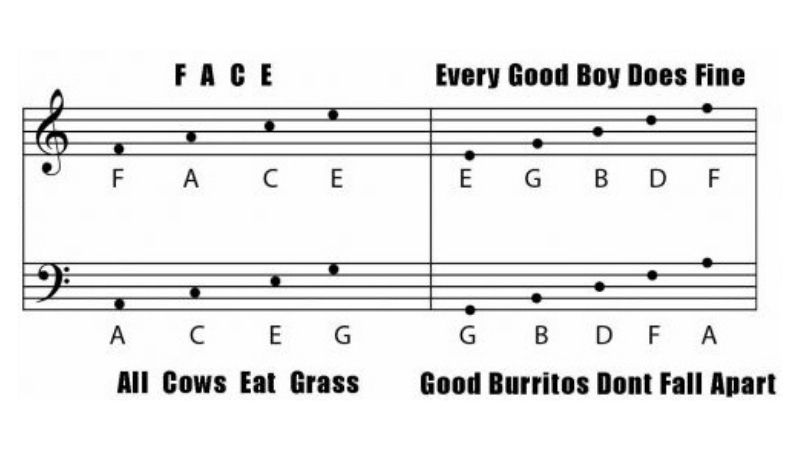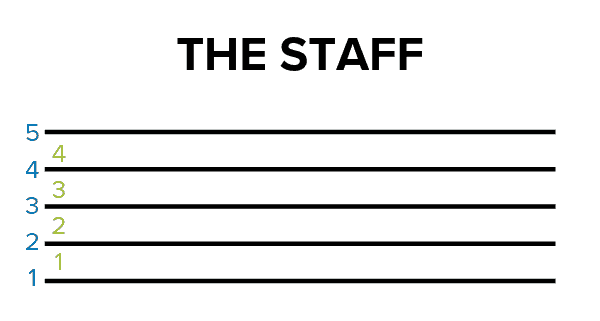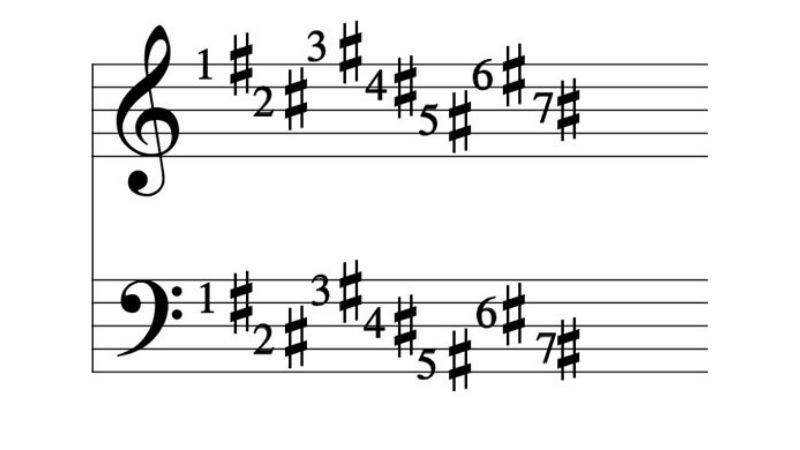
Tips and Tricks to Master Music Notations
Most people will have seen sheet music notations and symbols in movies like Whiplash, but it takes a trained mind to thoroughly make sense of what would otherwise seem like squiggles on paper. Learning music theory fundamentals such as music notations is like learning a new language, and every self-professed music buff can benefit from decoding the symbols and notes in music. This article tries to break down some of the commonly seen music notations and explain what they mean.
Essential music notations terminology
Staff

This is the foundation of all music notations. The staff comprises of five horizontal lines with four spaces between them, as shown. The lines are numbered 1 to 5, and the spaces are numbered 1 to 4, both starting from the bottom.
Clefs and note names
Every line and space of the staff corresponds to a musical pitch, determined by the clef. The two primary clefs are the treble clef and the bass clef. The 7 music notes are called A, B, C, D, E, F and G.
The treble clef is also called the G-clef because the curve in the fancy-looking “G” in the left encircles the G line on the staff. If your instrument (flute or sax or keyboard) has a high pitch, the music notations are written in the treble clef. The bass clef is also called the F-clef because the line between the two dots (see image) is the F line on the bass staff. Instruments with low pitches like the bassoon or cello will have their musical note symbols written in bass clef.
You can come up with your clever mnemonics to remember the order of lines of the bass and treble clef. One such example is illustrated below.

Musical notes
There are three parts of each musical note: the head, stem and flag. The head is either white or black. Where the note head sits on the staff, i.e. whether on a line or space, is an indication of which note you will play. If a note sits above or below the five lines of a staff, a line (known as the ledger line) is drawn just above or below the note head to indicate which note to play. The stem is a thin line extending up (extends right if pointing upward) or down (extends left) from the head. The direction is not significant but helps to fit them on the staff and read the music notation easier. A convention followed is that any note at or above the B line on the staff has downward stems. The flag is a curvy mark to the right of the stem, which tells how long we should hold a note.
Length of a note
A closed (black) note head with a stem is called a quarter note – it is played for one beat. A half note is a musical note symbol represented with a white head on a stem; this gets two beats. An open note without a stem is a whole note, played for four beats. Faster notes have a flag, which reduces the duration by half. A quarter note with a flag is an eighth note, lasting half a beat, and so on. A beam is essentially for the same purpose, but it makes reading the music notations convenient.
Learn Music
Learn the basics of music theory online, and master the theoretical basis of western music, from the blues to pop, metal, and more.

A dot after the note’s head indicates that another half of that note’s duration must be added to it. A tie is another music note symbol used for extending the duration of a note. Two notes tied together should be held for the duration of both notes together.
Accidentals
The accidental is a musical note symbol that’s added before a note to change its pitch by a semitone (or half-step). There are two types. When a note is to be lowered by a semitone, the music notation used is a “flat” sign. When a note should be raised, a hashtag symbol (“sharp” sign) is used. If a note is no longer intended to be flat or sharp, a “natural” symbol is added in front.
In a piano, the black keys perform the role of increasing or decreasing the pitch by a semitone. For example, the black key between C and D white keys sounds like a C sharp or a D flat. One way to reduce the use of accidentals is through key signatures. If certain music notations are intended to be sharp or flat throughout the piece, a key signature is used to indicate just this. But, as a convention, a key signature can contain only flats or only sharps (shown below) but not a combination of both.

Scales
A set of musical notations, such as guitar tabs, ordered by a combination of whole steps and half steps is called a scale. The two types of scales are major and minor scales, each with further categories.
All major scales are made up of this pattern of tones: whole-step, whole-step, half-step, whole-step, whole-step, whole-step, half-step. What do these music notations mean in an actual instrument? The C-major scale – C, D, E, F, G, A, B, C – for example, is played entirely with the white keys on a piano. The gap between the first and last notes in the scale is called an octave. If you start the scale on any other note, you have to add flats and sharps to maintain the same pattern of music notations.
Every major scale has an associated minor scale, beginning on the sixth note of the major scale. Consider the C-major scale: the sixth note is A; so, A-minor is the corresponding minor scale for C-major. All “natural” minor scales have a pattern like whole-step, half-step, whole-step, whole-step, half-step, whole-step, whole-step. Two other types of minor scales are the harmonic minor and the melodic minor.
Now it’s your chance to master music notation!
If you are motivated to learn western music notations, Upskillist online diploma in music will teach you how to read and write sheet music notes and symbols of a variety of styles like pop, blues and metal. In the course, you will also be assisted in exploring further theoretical analysis and complex musical notations.
Want to learn more? Join our top-rated today!



